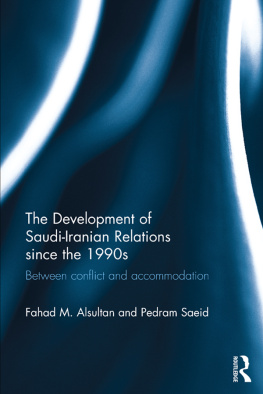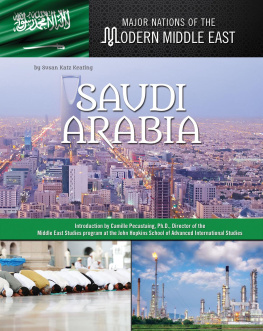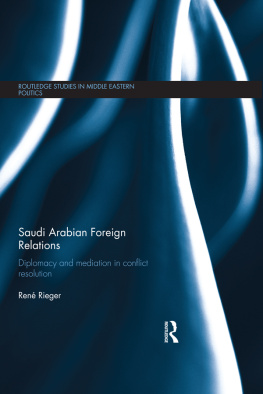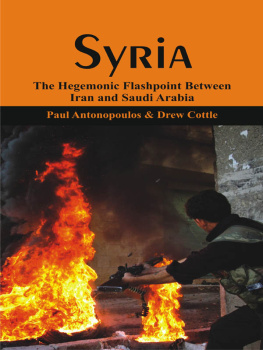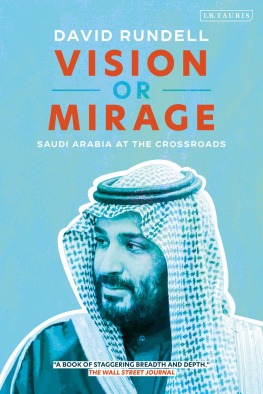The Development of Saudi-Iranian Relations since the 1990s
This book provides a detailed account of Saudi-Iranian relations since the end of the Iran-Iraq war and does so with great authority. Rooted in an original theoretical setting, the authors provide a most engaging account of the ups and downs of Saudi-Iranian bilateral relations since Ayatollah Rafsanjanis presidency. Arguing that Saudi-Iranian relations have been shaped by systemic factors as much as by institutions and the interests of key individual actors, Alsultan and Saeid show how a refined foreign policy analysis approach can shed light into the darker corners of the policy making arena in these countries international relations. This book adds considerably to the growing literature on relations between these two critical countries.
Prof. A. Ehteshami, Durham University
Saudi Arabia and Iran have established themselves as the two regional heavyweights in one of the worlds most tumultuous but critically significant regions. The two countries compete on many fronts, including regional politics, oil prices, and for leadership of the Islamic world, a competition with undeniable repercussions for the Greater Middle East and for the world. Some observers have gone so far as to claim that virtually everything that happens in this area of the world can be viewed as part of the Saudi-Iranian power struggle. With increasing importance of the region as the dominant supplier of world energy and the birthplace of Islamic militant groups, the consequences of not understanding Saudi-Iranian rivalry in the region have never been more serious. A range of internal and external explanatory factors explains the ups and downs of Saudi-Iranian relations since the 1990s. This book captures this complexity by drawing on multicausal explanations through multiple levels of interdisciplinary analysis. This is the first book on the subject that is co-authored by one author from Saudi Arabia and one from Iran. This collaboration allowed the authors to make the best use of Persian and Arabic sources, generating a locally meaningful account of the two countries relationship. As Iranian and Saudi nationals, they encountered less difficulty in gaining access to research participants, building rapport and conducting interviews with Iranian and Saudi scholars and informants.
Fahad M. Alsultan, Qassim University, Saudi Arabia.
Pedram Saeid, University of Hull, UK.
The Development of Saudi-Iranian Relations since the 1990s
Between conflict and accommodation
Fahad Mohammad Alsultan and Pedram Saeid
First published 2017
by Routledge
2 Park Square, Milton Park, Abingdon, Oxon OX14 4RN
and by Routledge
711 Third Avenue, New York, NY 10017
Routledge is an imprint of the Taylor & Francis Group, an informa business
2017 Fahad M. Alsultan and Pedram Saeid
The right of Fahad M. Alsultan and Pedram Saeid to be identified as authors of this work has been asserted by them in accordance with sections 77 and 78 of the Copyright, Designs and Patents Act 1988.
All rights reserved. No part of this book may be reprinted or reproduced or utilised in any form or by any electronic, mechanical, or other means, now known or hereafter invented, including photocopying and recording, or in any information storage or retrieval system, without permission in writing from the publishers.
Trademark notice: Product or corporate names may be trademarks or registered trademarks, and are used only for identification and explanation without intent to infringe.
British Library Cataloguing-in-Publication Data
A catalogue record for this book is available from the British Library
Library of Congress Cataloging in Publication Data
Names: Alsultan, Fahad M., author. | Saeid, Pedram, author.
Title: The development of Saudi-Iranian relations since the 1990s:
between conflict and accommodation/Fahad M. Alsultan and Pedram Saeid.
Description: New York, NY: Routledge, 2016. | Includes bibliographical references and index.
Identifiers: LCCN 2016009968 | ISBN 9781472461537 (hardback) |
ISBN 9781315615462 (ebook)
Subjects: LCSH: Saudi ArabiaForeign relationsIran. |
IranForeign relationsSaudi Arabia.
Classification: LCC DS228.I7 A37 2016 | DDC 327.538055dc23
LC record available at http://lccn.loc.gov/2016009968
ISBN: 978-1-4724-6153-7 (hbk)
ISBN: 978-1-3156-1546-2 (ebk)
Typeset in Times New Roman
by Keystroke, Neville Lodge, Tettenhall, Wolverhampton
Contents
This book explores the dynamics of bilateral relations between Saudi Arabia and Iran, two long-time rivals in the Gulf1 region, since the 1990s. The Gulf is one of the worlds most tumultuous but critically significant regions. With the decline of Iraq following the fall of Saddam in 1991, Iran and Saudi Arabia established themselves as the two regional heavyweights. The two countries compete on many fronts, including regional politics, oil prices, and for leadership of the Islamic world, a competition with undeniable repercussions for the Greater Middle East and for the world. Some observers have gone so far as to claim that virtually everything that happens in this area of the world can be viewed as part of Saudi-Iranian power struggle. With increasing importance of the region as the dominant supplier of world energy and the birthplace of Islamic militant groups, the consequences of not understanding Iran-Saudi rivalry in the region have never been more serious.
As with relations between any two states, the relationship between Iran and Saudi Arabia runs the gamut from conflict to cooperation. The Khatami presidency (19972005) saw the least tension; Ahmadinejads (20052013) and Rouhanis was the most turbulent. A range of internal and external explanatory factors explain the ups and downs of Saudi-Iranian relations since the 1990s. This book captures this complexity by drawing on multicausal explanations through multiple levels of interdisciplinary analysis.
This book is different from the current literature on Saudi-Iranian relations in significant ways. First and foremost, most of the research into Saudi-Iranian relations has been conducted within the tradition of historical diplomacy, thus adopting an atheoretical and narrative approach. Few studies in the field have rigorously applied theories of international relations to the study of Saudi-Iranian relations. Most theory-driven research in the field tends to be based on the theory of realism (or its variants), which overemphasises the role of the unitary state at the expense of domestic factors. To be sure, the two prevailing approaches in the study of Saudi-Iranian relations have an important commonality: both have scarcely taken into consideration domestic variables and thus have not identified key internal factors that are critical in understanding Saudi-Iranian relations. To fill this gap, this book presents a conceptual framework that combines insights from foreign policy analysis, which looks below the nation-state level of analysis, with those from state-centric theories of international relations.
Furthermore, most research thus far has focused on the period prior to the mid-1990s. The two decades since then have ushered in a series of changes that shook the foundation of the relationship between the two countries. The period under investigation allows for a comparison across three Iranian presidencies: those of Rafsanjani (19891997), Khatami (19972005), and Ahmadinejad (20052013). It also offers some insights into what lies ahead for the two countries relationship following the election of Hassan Rouhani as Irans president, which coincided with the events of late 2013 through 2015. Given that the fast-changing domestic and international events render any analysis of Saudi-Iranian relations quickly outdated, the authors intend to update this book regularly.

